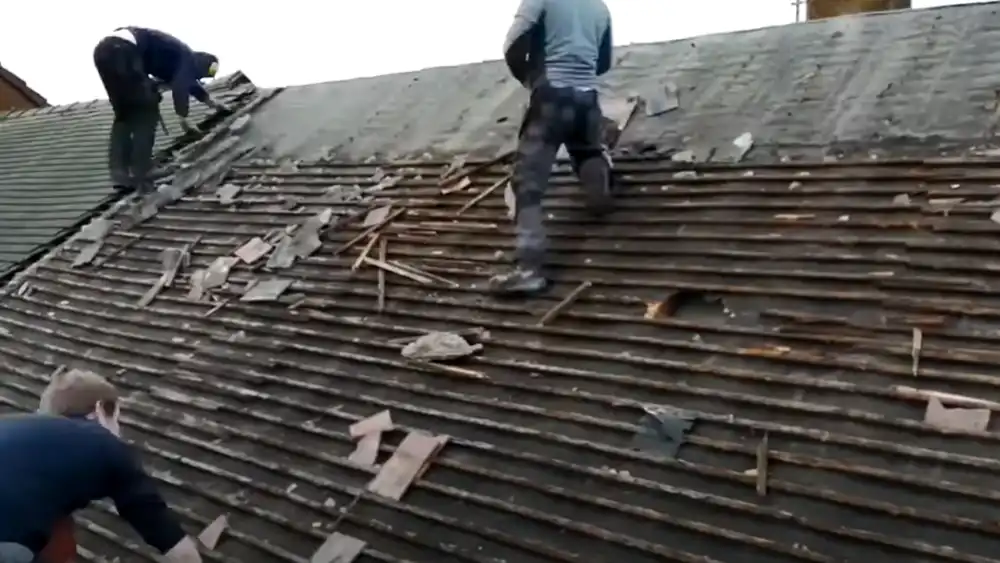Everything You Need to Know When it Comes to Roof Replacements

Is it time to replace your roof? Whether you’re dealing with a leaky roof or simply planning for the future, understanding the ins and outs of roof replacements is crucial. Not only does a well-maintained roof protect your home, but it also enhances its aesthetic appeal and value. In this comprehensive guide, we’ll walk you through everything you need to know about roof replacements, from signs it’s time for a new roof to choosing the right materials and hiring the best contractor.
Roof Replacement Process: Step by Step Explained
1. Signs It’s Time for a Roof Replacement
One of the most obvious signs that you need a roof replacement is visible damage. This can include missing or cracked shingles, sagging areas, or even holes. If you notice any of these issues, it’s essential to take action quickly to prevent further damage. The age of your roof is another critical factor. Most roofs last between 20 and 30 years, depending on the materials used. If your roof is nearing the end of its lifespan, it’s time to start planning for a replacement.
If you find yourself constantly repairing your roof, it may be more cost-effective in the long run to replace it entirely. Frequent repairs can add up quickly, and a new roof will provide peace of mind for years to come.
2. Get Experts to Do The Job
A knowledgeable contractor will ensure your roof is installed correctly and can withstand the elements for years to come. Working with a contractor who understands the unique considerations of the local weather, architecture, and home value is essential, as stated on the https://palladiumroofing.com/roofing/nichols-hills/ website. They’ll also be able to provide valuable advice on the best materials and maintenance practices for your specific situation.
3. Choosing the Right Roofing Materials

Asphalt shingles are one of the most popular roofing materials due to their affordability and durability. They come in various colors and styles, making it easy to find an option that suits your home’s aesthetic. Metal roofing is becoming increasingly popular thanks to its longevity and energy efficiency. While it may be more expensive upfront, metal roofing can last up to 50 years with proper maintenance. Tile roofing is known for its durability and unique appearance.
It’s an excellent choice for homes in warmer climates, as it helps keep the interior cool. However, tile roofing can be heavy and may require additional structural support.
4. Benefits of a Roof Replacement
A new roof can significantly enhance your home’s curb appeal. With various colors and styles available, you can choose a roof that complements your home’s exterior and boosts its overall look. A well-maintained roof is a valuable asset when it comes to selling your home. Potential buyers will appreciate the peace of mind that comes with a new roof, and it can even increase your home’s resale value.
Modern roofing materials are designed to improve your home’s energy efficiency. By reflecting sunlight and reducing heat absorption, a new roof can help lower your energy bills and create a more comfortable living environment.
5. Preparing for a Roof Replacement
Before embarking on a roof replacement, it’s essential to budget for the project. Consider the cost of materials, labor, and any additional expenses such as permits or disposal fees. Having a clear budget in mind will help you make informed decisions throughout the process. Selecting the right contractor is crucial for a successful roof replacement. Look for a contractor with experience, positive reviews, and proper licensing and insurance.
Don’t be afraid to ask for references and get multiple quotes to ensure you’re getting the best value for your money. Once you’ve chosen a contractor, work with them to schedule the replacement at a convenient time. Keep in mind that weather conditions can impact the timeline, so be prepared for potential delays.
6. The Roof Replacement Process
The first step in the roof replacement process is an initial inspection. Your contractor will assess the condition of your current roof and identify any underlying issues that need to be addressed. Next, your contractor will remove the old roofing materials. This process can be noisy and messy, so it’s essential to prepare your home and communicate with your neighbors.
Once the old roof is removed, your contractor will install the new roofing materials. This process typically takes a few days, depending on the size and complexity of your roof.
Conclusion
A roof replacement is a significant investment, but it’s one that pays off in the long run. By understanding the signs that it’s time for a new roof, choosing the right materials, and working with a knowledgeable contractor, you can ensure a successful roof replacement project. Remember to budget for the project, upgrade your home, and stay on top of post-replacement care and maintenance.

news via inbox
Sign up and never miss out on the latest news and updates at HighStuff




